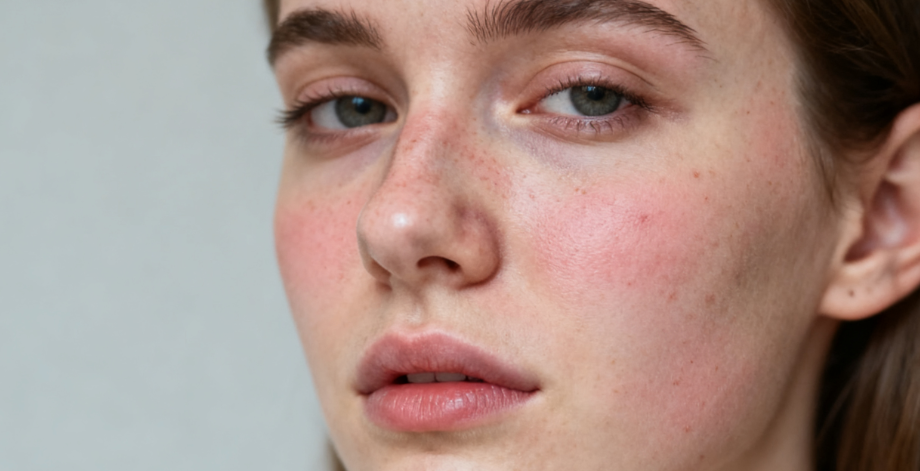Consumers have long been concerned about skin irritation caused by cosmetics, which has led to intensified competition in the sensitive skin repair market.
According to data from industry research institutions, the global sensitive skin skincare market has maintained an annual growth rate of over 15% in recent years, exceeding 50 billion US dollars in 2024.
At the same time, the pain points of sensitive skin users have not been fully resolved—at least half of consumers report that basic soothing products fail to address recurring redness and itching.
As consumers deepen their understanding of skin health, demand for sensitive skin repair has gradually increased. Consumer needs have shifted from “basic soothing” to multi-functional synergy of “repair/brightening/anti-aging/sunscreen,” a transformation that has directly driven innovation and iteration in raw materials.
The following four ingredient trends are particularly noteworthy:
1. Skin Microbiome Regulation
Imbalance of the skin microbiome is one of the core causes of recurring redness and itching in sensitive skin.
The article Evidence that Human Skin Microbiome Dysbiosis Promotes Atopic Dermatitis mentions that patients with atopic dermatitis are often colonized by Staphylococcus aureus, which exacerbates their condition.
A research team from multiple U.S. institutions stated in Study Shows Skin Microbiome Imbalance Likely Behind Eczema Flareups that there is a link between skin microbiome imbalance and eczema flare-ups.
Driven by improved consumer awareness, microbiome-regulating ingredients have gradually become fundamental components for sensitive skin repair in 2025. The principle of these ingredients is to improve the skin’s surface microbiota, rebuild the skin’s natural defense system, and fundamentally resolve skin allergies. Compared with traditional strategies that only relieve external symptoms, this application logic is recognized by many institutions worldwide.Currently, mainstream microbiome-regulating ingredients fall into three categories:
Prebiotics (nourish probiotics): Such as α/β-glucan, inulin, and fructo-oligosaccharides. They provide nutrients for beneficial bacteria to outcompete harmful bacteria for colonization space; meanwhile, these ingredients enhance the moisture-retention capacity of the skin’s stratum corneum.
Probiotics: Including Lactobacillus, Staphylococcus epidermidis, and Micrococcus luteus. They directly supplement beneficial bacteria on the skin, outcompete harmful bacteria for colonization space, and regulate immune responses.
Postbiotics: Metabolites of probiotics (e.g., lactobacillus exopolysaccharides, peptidoglycans). They eliminate concerns about probiotic activity, act directly on the skin barrier, and promote ceramide synthesis, making them suitable for damaged sensitive skin.
Among international brands, some have launched repair lotions with “prebiotic + probiotic” compound ingredients. Clinical data shows these can reduce the frequency of redness in sensitive skin. The addition of such ingredients has given these brands a competitive edge in differentiation.
Innovative products in this category:
French brand Laboratoire Synbionyme has developed the Pro-B 3 Multi-Defense System and launched products such as the Radiance Moisturizing Gel-Cream, which combines prebiotics, probiotic extracts, and omega-3, 6, and 9 ingredients.
U.S. brand Tula is known for its “probiotic skincare” concept. Its Triple Vitamin C Brightening Serum contains the S⁶Pro Complex™, a combination of three probiotic extracts and three prebiotic essences.
Additionally, the Toleriane Double Repair series by French dermo-cosmetic brand La Roche-Posay incorporates prebiotic thermal spring water in its formula. Rich in minerals and trace elements, it effectively enhances skin stability.
2. New-Structure Neuro-Peptides: Precisely Target “Sensitive Signals”
In 2025, peptide-based ingredients have gained rapid attention in the sensitive skin market due to their high activity and low irritation.
Data shows that the “neuro-peptide” segment achieved a growth rate of over 50% in 2024. Compared with traditional soothing ingredients like panthenol and allantoin, new-structure neuro-peptides can precisely block “sensitive signal transmission,” reducing sensitivity at the source like a “surgical procedure.”
Among all peptide ingredients, acetyl dipeptide-1 is a typical representative: a new type of neuro-peptide that stimulates the release of pro-endorphins to relieve pain and burning sensations. It also inhibits two types of sensitive mediators—calcitonin gene-related peptide (CGRP) and substance P (SP)—fundamentally improving redness and broken capillaries.
In addition, acetyl tetrapeptide-15 and dipeptide-4 have gradually been used in sensitive skin products:
SkinCeuticals, a U.S. skincare brand, has launched a Peptide Anti-Wrinkle Serum that combines acetyl tetrapeptide-5, palmitoyl pentapeptide-4, and oligopeptide-68.
The Collagen Peptide Firming series by South Korean brand ISOV focuses on sensitive skin repair, incorporating a 5-peptide complex including acetyl tetrapeptide into its formula.
Furthermore, French brand Laboratoire Synbionyme has integrated dipeptide-4 into its sensitive skin product line, making it particularly suitable for use during seasonal transitions.
3. Recombinant Proteins for Efficient Repair
In 2025, breakthroughs in synthetic biology have made high-purity, high-activity recombinant proteins a “technology-barrier ingredient” in the sensitive skin market.
In particular, technologies such as AI-assisted chassis cell design and targeted protein structure optimization have become more mature, significantly reducing the production cost of recombinant proteins. Due to their high homology with human skin components, these recombinant proteins are more conducive to absorption and reduce skin sensitivity.
Currently, mainstream recombinant proteins in the cosmetics field include:
Recombinant mussel adhesive protein: With a purity of over 95%, it forms a “protective film” on the skin surface while promoting epithelial cell regeneration.
Recombinant human-like collagen: With over 98% sequence similarity to human collagen, it directly supplements collagen loss in the skin and also has anti-aging effects.
To improve absorption efficiency, these ingredients are often paired with nano-lipid carriers and microfluidic penetration technology to prevent loss of protein activity during delivery.
Innovative products in this category:
The core ingredient of Celoy (French brand)’s Mussel Type III Purple Bottle is recombinant mussel adhesive protein Type III. This ingredient has excellent antioxidant properties and enhances cell activity and self-repair capabilities.
The B.L.C Source Repair Multi-Effect series by Terrake, a French niche SPA skincare brand, contains third-generation recombinant Type III human-like collagen. It is 100% homologous to human collagen and has excellent transdermal absorption capabilities.
4. 2025 Sensitive Skin Ingredient Trends: Gentle and Effective Functional Botanical Extracts
Botanical extracts have always been one of the most popular ingredients among sensitive skin users. However, in 2025, their development has seen a significant shift: from “single plant extraction” to “precision isolation of functional components.” This is because some components in plants may cause allergies in certain populations, requiring more precise removal of allergens.
To further enhance efficacy, technologies such as subcritical low-temperature extraction and supercritical CO₂ extraction are used to isolate clearly effective components from plants, remove allergenic impurities, and achieve gentle repair.
For example, an international brand extracts edelweiss glycoside from alpine edelweiss; after 6 rounds of ultra-refinement, its active purity reaches 92%. Another brand isolates “β-glucan fragments” from oats, which retains the soothing properties of oats while improving skin permeability.
Relevant products:
Some sensitive skin care products by Dr.Hauschka (German brand) use supercritical CO₂ extraction to isolate “β-glucan fragments” from oats.
FANCL (Japanese brand)’s Nano Purifying Cleansing Oil uses subcritical low-temperature extraction to obtain pure oil from jojoba oil. It not only removes makeup efficiently but also avoids sensitivity caused by over-cleansing.
The Cellular Brightening Repair Cream by Cellcosmet (Swiss brand) extracts active factors from plant placenta, removing potential allergenic impurities through advanced isolation technology to ensure the product is gentle and non-irritating.
Conclusion: Three Core Principles for 2025 Sensitive Skin Ingredients
Priority to scientific verification: Ingredient efficacy must be supported by in vitro experiments and human clinical data, rather than relying solely on “natural” or “botanical” concepts.
Precise pain point resolution: Shift from “broad-spectrum soothing” to “targeted action.”
Innovation through multi-functional synergy: A single ingredient can hardly meet the comprehensive needs of repair/anti-aging and brightening. In the future, more compound combinations will be used to build a comprehensive repair system.
Leecosmetic: Using raw materials from internationally renowned companies
Leecosmetic is a leading cosmetics manufacturer. It provides high – quality cosmetics products at very competitive prices and with low minimum order quantities.
We offer a range of services, such as private label cosmetics manufacturing, OEM/ODM manufacturing, and provide a complete product supply solution for small and medium – sized cosmetics brands.
As a fast – growing private label cosmetics manufacturer, Leecosmetic has been using raw materials from internationally renowned companies in a safe and efficient manner.
Contact: https://leecosmetic.com/contactus/

